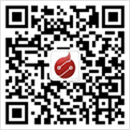完善资料让更多小伙伴认识你,还能领取20积分哦, 立即完善>
3天内不再提示
完善资料让更多小伙伴认识你,还能领取20积分哦, 立即完善>
 电子发烧友论坛
电子发烧友论坛|
大家好,所以我遇到的问题是确定用于测试夹具纠错过程的适配器特征的不确定性。
我们将使用适配器及其s2p文件对测试夹具中的所有信号路径进行路径表征,然后移除以进行性能测试。 这个过程在不确定性计算器中被视为“适配器移除”吗? 我没想到我们的不确定性加倍,所以我想检查一下我是否使用了正确的设置。 以上来自于谷歌翻译 以下为原文 Hi guys, So the problem I'm having is determining the uncertainty in characterizing an adapter used for test fixture error correction processes. We'll do our path characterizations for all signal paths in the test fixture using the adapter and its s2p file and then remove for performance testing. Is this process considered "adapter removal" in the uncertainty calculator? I wasn't expecting our uncertainty to double so I wanted to check if I was using the correct setting. |
|
相关推荐
4个回答
|
|
|
来自Keysight的其他不确定性专家可能会参与讨论,但我的理解是,通过使用去嵌入来消除适配器的影响所引入的不确定性基本上是用于创建的s参数测量的不确定性
S2P文件。 去嵌入与进行多层校准相同。 所以,如果你正在进行最坏情况分析,那么可以想象,如果你基本上做两个独立的2端口cals,那么总不确定性会加倍。 以上来自于谷歌翻译 以下为原文 there are other uncertainty experts from Keysight on the forum, who will probably chime in, but my understanding is that the uncertainty introduced by using de-embedding to remove the effects of an adapter is basically the uncertainty in the s-parameter measurements used to create the S2P file. de-embedding is the same as doing a multi-tier calibration. So, if you are doing worst-case analysis, then it is conceivable that if you are basically doing two separate 2-port cals, then the total uncertainty would double. |
|
|
|
|
Topcbpcba 发表于 2018-9-27 06:39 感谢Daras的回应。 与此相关的另一个问题是我们试图去嵌入的M8适配器。 我认为校准套件必须有一个M8连接器来执行适配器移除? 这是端口扩展选项有用吗? 以上来自于谷歌翻译 以下为原文 Thanks for the response Daras. Another issue related to this is the M8 adapter we're trying to de-embed. I assume the cal kit would have to have an M8 connector to perform adapter removal? Is this where the port extension option would help? |
|
|
|
|
|
> {quote:title = Andrew003写道:} {quote}> ...我认为校准套件必须有一个M8连接器来执行适配器移除? 这是端口扩展选项有用吗? 我并不熟悉M8连接器,但总的来说答案是肯定的。 要进行任何类型的适配器移除或适配器特性校准,您需要一个与适配器两侧的连接器相匹配的校准套件。 因此,例如,如果我想要描述一个3.5mm到N型适配器,我需要一个3.5mm和一个N型校准套件。 如果您没有Cal Kit,那么您可以使用端口扩展威廉希尔官方网站 来补偿适配器的丢失和延迟,但它不会解决适配器连接的参考平面上的任何不匹配错误 到DUT。 在较新的PNA Keysight网络分析仪型号中,我们还有一个名为Automatic Fixture Removal(或AFR)的新选项。 如果您可以在适配器的末端进行开放(或短暂)测量,并且适配器一直运行到DC,则此功能使用时域威廉希尔官方网站 来完全表征适配器的s参数(包括不匹配) (即没有像波导那样的截止频率) 以上来自于谷歌翻译 以下为原文 > {quote:title=Andrew003 wrote:}{quote} > ...I assume the cal kit would have to have an M8 connector to perform adapter removal? Is this where the port extension option would help? I am not personally familiar with M8 connectors, but in general the answer is yes. to do any kind of adapter removal or adapter characterization calibration you need a cal kit that matches the connector on either side of the adapter. So for example if I wanted to characterize a 3.5mm to N-Type adapter, I would need a 3.5mm and an N-Type cal kit. If you don't have a Cal Kit, then you can resort to using a port extension technique that can compensate for the loss and the delay of the adapter, but it does not account for any mismatch errors at the reference plane where the adapter connects to the DUT. in the newer PNA Keysight network analyzer models we also have a new option called Automatic Fixture Removal (or AFR). this feature uses a time domain technique to fully characterize the s-parameters of an adapter (including mismatch) if you can make an open (or a short) measurement at the end of the adapter and if your adapter operates all the way down to DC (i.e. no cutoff frequency like a waveguide) |
|
|
|
|
Topcbpcba 发表于 2018-9-27 06:39 好吧,我们已经有一个新问题出现了去嵌入的不确定性。 通常,我们将测量中的所有不确定性RSS一起用于总体预算。 如果您使用与测试UUT相同的ecal或校准套件获得s2p,那么许多错误术语是否依赖? 我猜这就是为什么当你选择这个程序时,计算器中的测量不确定性似乎加倍了? 我知道用于VNA不确定性的公式包含噪声效应等。 如果我想得到准确的不确定数字,我需要将依赖项与随机项分开吗? 是否有一篇论文指出哪些错误术语需要与RSSed一起添加? 还有,很酷的新论坛! 以上来自于谷歌翻译 以下为原文 Ok so we've had a new issue come up with uncertainty in de-embedding. Typically we RSS all of our uncertainties in measurement together for an overall budget. If you obtain your s2p with the same ecal or cal kit being used for testing the UUT, are a lot of those error terms dependent? I guess this is why the measurement uncertainty in the calculator seems to double when you have this procedure selected? I know the formulas used for VNA uncertainty have noise effects etc. included in them. If I want to get accurate uncertainty numbers, I would need to separate out the dependent terms from random ones? Is there a paper that specifies which error terms need to be added together vs. RSSed? Also, cool new forum! |
|
|
|
|
只有小组成员才能发言,加入小组>>
1201 浏览 0 评论
2338 浏览 1 评论
2139 浏览 1 评论
2012 浏览 5 评论
2887 浏览 3 评论
936浏览 1评论
关于Keysight x1149 Boundary Scan Analyzer
687浏览 0评论
N5230C用“CALC:MARK:BWID?”获取Bwid,Cent,Q,Loss失败,请问大佬们怎么解决呀
789浏览 0评论
1202浏览 0评论
 /7
/7 

小黑屋| 手机版| Archiver| 电子发烧友 ( 湘ICP备2023018690号 )
GMT+8, 2024-11-10 20:34 , Processed in 1.465163 second(s), Total 83, Slave 67 queries .
Powered by 电子发烧友网
© 2015 bbs.elecfans.com

关注我们的微信

下载发烧友APP

电子发烧友观察

版权所有 © 湖南华秋数字科技有限公司
电子发烧友 (电路图) 湘公网安备 43011202000918 号 电信与信息服务业务经营许可证:合字B2-20210191





 淘帖
淘帖 1471
1471

